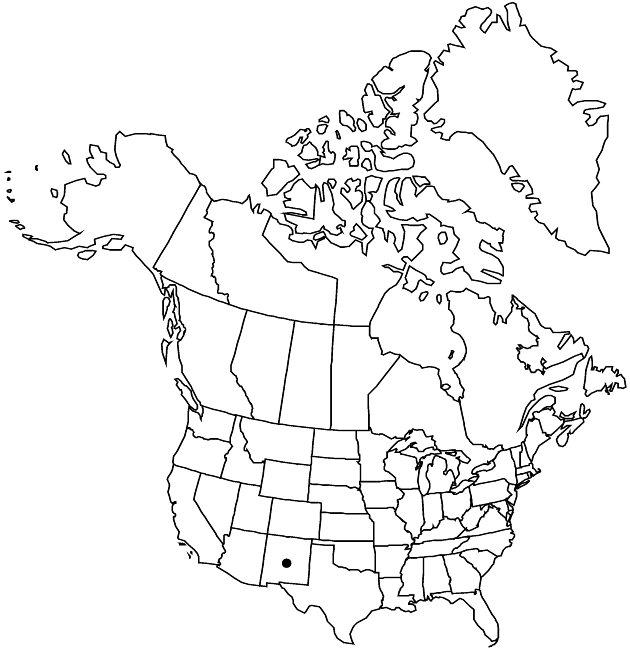Difference between revisions of "Perityle staurophylla var. homoflora"
Madroño 30: 116. 1983.
Treatment appears in FNA Volume 21. Treatment on page 333.
FNA>Volume Importer |
FNA>Volume Importer |
||
| Line 24: | Line 24: | ||
|distribution=N.Mex. | |distribution=N.Mex. | ||
|discussion=<p>Of conservation concern.</p><!-- | |discussion=<p>Of conservation concern.</p><!-- | ||
| − | --><p>Variety homoflora occurs at the northern end of the San Andres Mountains (Rhodes Canyon and northward) in south-central New Mexico. A waxy, white coating on the cypselae, which was included by the describing author as a distinguishing characteristic, also occurs in some populations of < | + | --><p>Variety homoflora occurs at the northern end of the San Andres Mountains (Rhodes Canyon and northward) in south-central New Mexico. A waxy, white coating on the cypselae, which was included by the describing author as a distinguishing characteristic, also occurs in some populations of <i></i>var.<i> staurophylla</i> and other species of <i>Perityle</i> as well.</p> |
|tables= | |tables= | ||
|references= | |references= | ||
| Line 33: | Line 33: | ||
-->{{#Taxon: | -->{{#Taxon: | ||
name=Perityle staurophylla var. homoflora | name=Perityle staurophylla var. homoflora | ||
| − | |||
|authority=Todsen | |authority=Todsen | ||
|rank=variety | |rank=variety | ||
| Line 48: | Line 47: | ||
|publication year=1983 | |publication year=1983 | ||
|special status= | |special status= | ||
| − | |source xml=https://jpend@bitbucket.org/aafc-mbb/fna-data-curation.git/src/ | + | |source xml=https://jpend@bitbucket.org/aafc-mbb/fna-data-curation.git/src/eaa6e58056e40c9ef614d8f47aea294977a1a5e9/coarse_grained_fna_xml/V19-20-21/V21_833.xml |
|tribe=Asteraceae tribe Heliantheae | |tribe=Asteraceae tribe Heliantheae | ||
|subtribe=Asteraceae (tribe Heliantheae) subtribe Peritylinae | |subtribe=Asteraceae (tribe Heliantheae) subtribe Peritylinae | ||
Revision as of 19:39, 16 December 2019
Leaves: lobes usually linear to filiform. Ray florets 0. 2n = 34.
Phenology: Flowering spring–fall.
Habitat: Crevices in limestone and granite cliffs
Elevation: 1600–2000 m
Discussion
Of conservation concern.
Variety homoflora occurs at the northern end of the San Andres Mountains (Rhodes Canyon and northward) in south-central New Mexico. A waxy, white coating on the cypselae, which was included by the describing author as a distinguishing characteristic, also occurs in some populations of var. staurophylla and other species of Perityle as well.
Selected References
None.
Lower Taxa
None.
